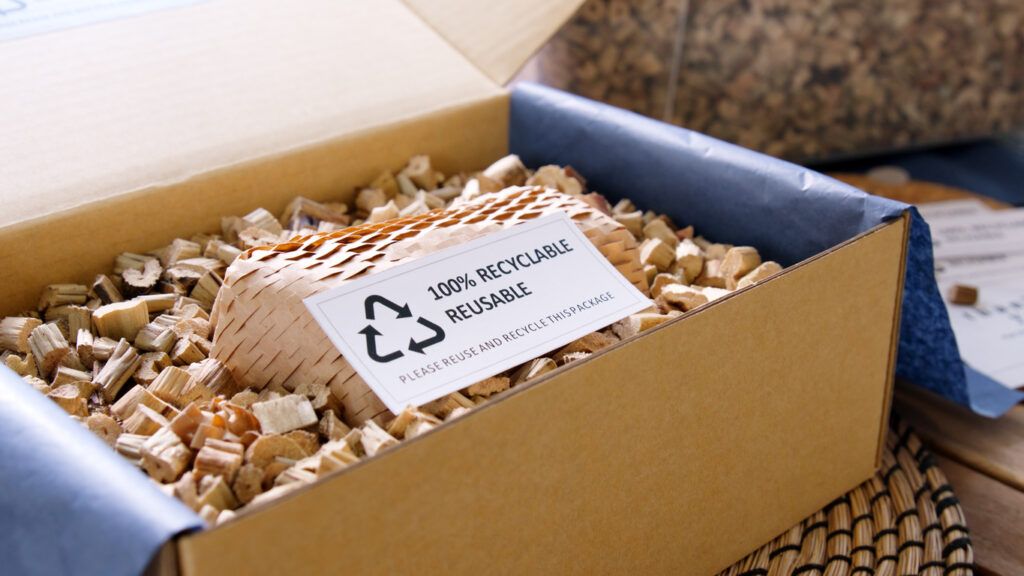Introduction
As some of you may be aware a new version of the UK packaging waste regulations was recently released. ‘Large’ organisations now have a responsibility to pay waste disposal fees for the packaging on their products that eventually becomes household waste. Organisations are ‘large’ if they meet the following criteria:
- annual turnover of £2 million or more, and
- responsible for the handling and supplying of more than 50 tonnes of empty or packaged goods in the UK.
Background
Paying waste disposal fees in this manner is a way of internalising environmental costs. The theory is that an organisation that is involved in the packaging chain (for example they package a product) will pay for the cost of disposal of the packaging when it comes to the end of its life if it ends up in the household waste stream.
Internalising costs such as this is a way for the government not just to get the company to pay for the waste disposal fees but also to incentivise the organisations in the packaging chain to reduce the amount of packaging on its products (they will pay less waste disposal fees). It’s essentially an implementation of extended producer responsibility / polluter pays.
Previous to the new approach, the local authority would pay the cost of disposal, and the organisation would not directly contribute – this is an example of externalising environmental costs as the cost of disposal is borne by the local authority not the organisation who create the packaging. Lesson over!
Waste Disposal Fees Calculation
Waste disposal fees are paid by large producers for household waste, waste that usually end up in public bins (such as drinks cartons, take away food containers and confectionery packaging) and glass household drink containers. The fees will be calculated for packaging placed on the market in 2024 and will be invoiced from October 2025.
Household waste largely incorporates what is known as primary packaging. This would be the packaging that the item is sold in. Imagine a bottle of soft drink, the plastic bottle itself would be classed as primary packaging. Other packaging categories such as the cardboard box that the drinks bottles are delivered to the store in are not included as these are not likely to become household waste.
At present the government has developed rough fees for waste disposal, these are known as ‘illustrative base fees (IBFs)’. These are what obligated organisations are likely to be charged in the first year of the scheme. They are allocated by packaging material (aluminium, fibre based composite, glass paper or board, plastic, steel, wool and other).
The IBFs are calculated using the following formula:
Fees per tonne of packaging placed on the market = local authority household packaging waste management costs / total amount of household packaging placed on the market.
At present the actual fees that will be charged are uncertain as not all data on packaging has been reported yet, the latest reported data has not been analysed and seasonal fluctuations in packaging are not clear. Anyway, DEFRA have committed to releasing the final fees for the first year of the scheme after the 1st April 2025 as this is the deadline by which registered producers must report their packaging data.
After the first year of the scheme (based on 2024 packaging data) fees will be based around the recyclability of packaging waste. Less recyclable packaging types will incur higher fees and vice versa. The assessment of the recyclability of packaging will be based around the Recyclability Assessment Methodology.
You should be aware that unlike other elements of the Regulations, such as the purchase and submission of packaging recovery notes (PRNs), these fees must be paid directly by the organisation it cannot employ a compliance scheme or other party to pay them on its behalf.
Final Note
The payment of local authority waste disposal fees for packaging that ends up becoming household waste is an interesting addition to the Packaging Waste Regulations. It’s a clear example of the internalisation of environmental costs as the cost of dealing with such waste is borne by the organisation that puts it on the market, not the local authority who collects and processes it.
For formal training in environmental management, individuals and organisations can explore courses such as the ISEP (formerly IEMA) Certificate in Environmental Management or the NEBOSH Environmental Management Certificate.

John Binns BSc (Hons) MSc MISEP (formerly IEMA) is an experienced environmental tutor and consultant.
